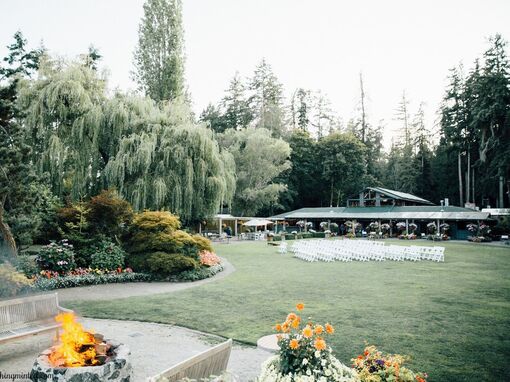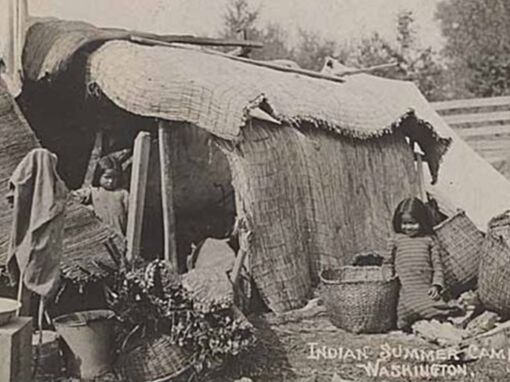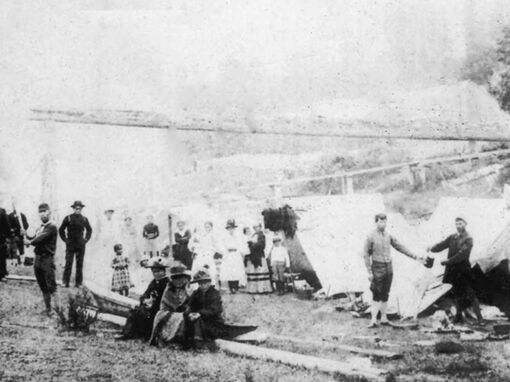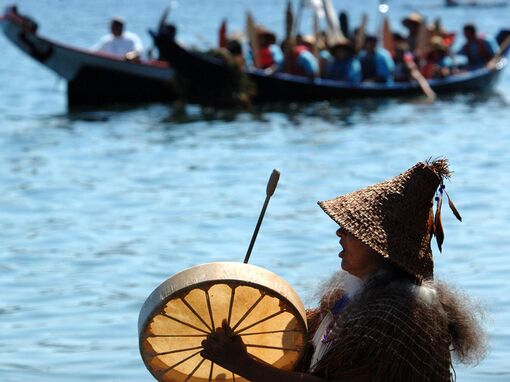Please find all parking info under the transportation tab!
Hannah & Ben
Please find all parking info under the transportation tab!
Hannah & Ben
Our Venue + Suquamish History

^Kiana Lodge^
The Suquamish Tribe owns the land that both our venue, The Kiana Lodge, and our hotel, The Suquamish Clearwater Casino Resort, sit on today. We want to give a little history and acknowledge the land on which we will get married.
The Suquamish Tribe take their name from the traditional Lushootseed phrase for “people of the clear salt water” and are expert fisherman, canoe builders and basket weavers that have lived in harmony with the lands and waterways along Washington’s Central Puget Sound Region for thousands of years. The Suquamish and their ancestors have inhabited the Puget Sound area for thousands of years. Before European contact, the region was one of the most populated centers north of what is now Mexico City.

The Suquamish had winter villages at Suquamish, Point Bolin, Poulsbo, Silverdale, Chico, Colby, Olalla, Point White, Lynwood Center, Eagle Harbor, Port Madison and Battle Point. The best known winter village was Old Man House , the home of Chief Seattle and Chief Kitsap.
Traditionally, Suquamish periodically left their winter residences in the spring, summer and early fall in family canoes to travel to temporary camps at fishing, hunting and gathering grounds. The seasonal camps consisted of portable frames made of tree saplings covered with woven cattail mats.

In 1792, three hundred years after Columbus landed in the New World, the original inhabitants of the Puget Sound region gained their first direct knowledge of Europeans. Captain George Vancouver and the men of the ship Discovery had come to map the Puget Sound in preparation to claim ownership. Over the next fifty years, the Suquamish adapted to a changes brought on by the entry of non-natives into the Puget Sound. Fur traders and missionaries were the first and were then followed by permanent settlers traveling over the Oregon Trail. In 1841 the Unites States Exporling Expedition, led by Charles Wilkes, entered the Puget Sound, further documenting Suquamish culture. Settlement intensified in the 1850s after Congress passed the Oregon Donation Land Claim Act that opened Suquamish and other tribal lands to non-native settlement.

In 1854, several years after European settlers began to establish themselves in the Puget Sound area, the United States government elected to make treaties with Tribes in what was then known as Washington Territory. The treaties were necessary to extinguish title to land in order to free it for white settlement.
In the treaties, tribes relinquished claims to most of the land they occupied and at the same time reserved a number of smaller “reservations” near their winter village sites. Indians also reserved the right to continue to hunt, gather, and fish without interference in traditional areas off their reservations. In exchange for all of the ceded Indian lands, the federal government agreed to provide limited supplies, educational services, medical care and modest monetary compensation. The government also agreed to protect Indian rights and lands that were reserved to the tribes.
The treaties were not ratified by Congress until four years following negotiations, during which time many of their provisions were being violated.
The Suquamish have persevered despite attempts by the federal government to assimilate them through land policy; specifically the allotment of the reservation into separate parcels assigned to individual family heads. One of the most significant events during this period was the destruction of Old Man House in 1870. The Suquamish, who lived communally in the house for thousands of years before its’ destruction, continued to live on the grounds where it once stood until being forced onto individual family allotments in 1904. The destruction of the house and the scattering of the tribal settlement changed the communal living structure vital to the Suquamish way of life. The subsequent mandates for Suquamish children to attend Indian Boarding Schools from 1900-1920 further worked to assimilate Suquamish people and distance them from their traditional life ways.
After the enactment of the American Indian Reorganization Act, the Suquamish spent the last half of the twentieth century formalizing and building government-to-government relationships with Federal, State and local agencies through the process of self-determination. The Suquamish Tribe enacted a formal constitution in 1965, establishing Tribal Council and became a voting member of the National Congress of American Indians soon afterward. Suquamish was also recognized in the historic 1974 Boldt Decision, establishing Washington Treaty Tribes as co-managers of the region’s fishery alongside State and Federal regulators. In 1989 the Suquamish also formalized their relationship with Washington State through the Centennial Accord.
If you want to learn more about the Suquamish Tribe, all of the above info was cited and borrowed here. Read more and consider visiting one of their sites open to tourists on your visit! We appreciate you taking the time to learn about the Suquamish Tribe.
